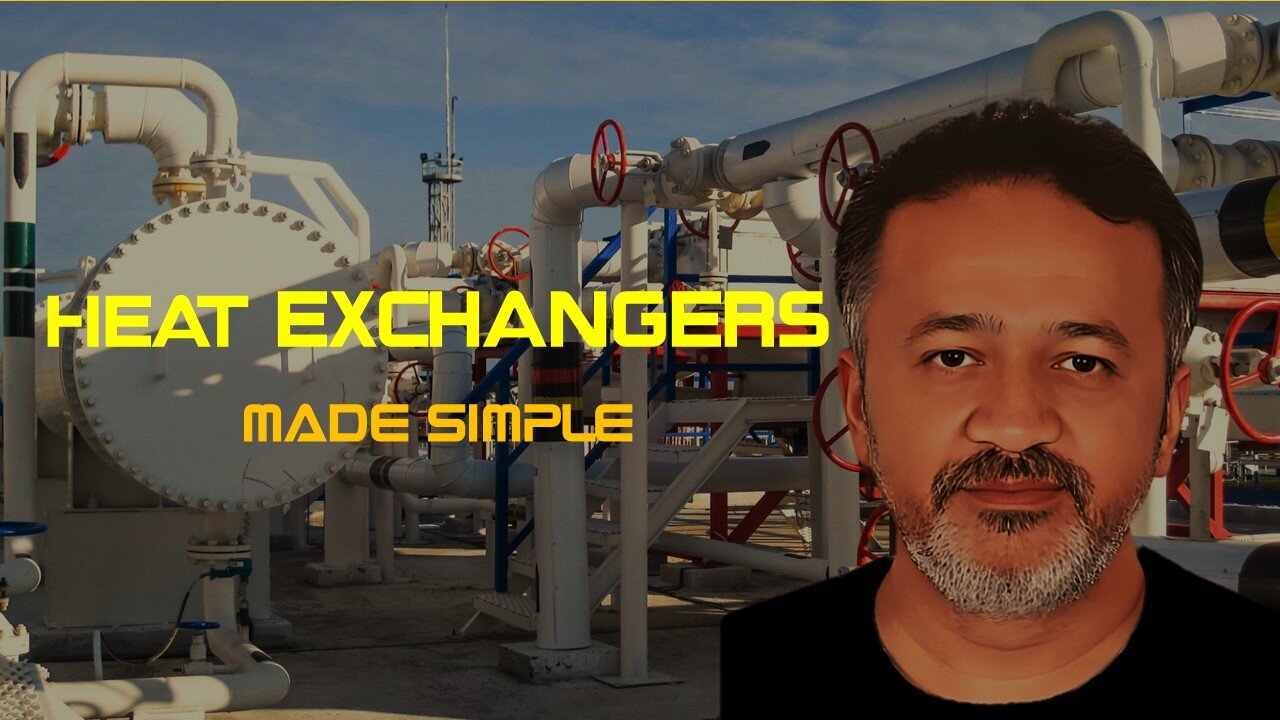Premium Only Content

Heat Exchangers Demystified: Essential Concepts and Designs |Mastering the Art of Heat Transfer
Heat exchangers are crucial devices used in various industries to efficiently transfer heat from one fluid or gas stream to another. They are designed to maximize the exchange of thermal energy while minimizing energy loss.
The primary purpose of a heat exchanger is to facilitate the transfer of heat between two mediums that are at different temperatures. This can involve either heating or cooling one of the fluids or achieving a temperature exchange without a significant change in either fluid's temperature.
Heat exchangers come in different types and designs, but the fundamental principle remains the same: the fluids flow in separate paths, allowing heat to transfer from one fluid to the other. Some common types of heat exchangers include:
Shell and Tube Heat Exchangers: This is the most common type of heat exchanger, consisting of a shell (a large outer vessel) and multiple tubes within it. One fluid flows through the tubes, while the other flows outside the tubes within the shell. Heat is transferred through the tube walls from one fluid to the other.
Plate Heat Exchangers: These heat exchangers consist of a series of plates with alternating flow channels. The fluids flow through these channels in a counterflow or parallel flow configuration, allowing for efficient heat transfer. Plate heat exchangers are compact, lightweight, and have high heat transfer coefficients.
Finned Tube Heat Exchangers: In this type, tubes are equipped with extended surfaces or fins to increase the heat transfer area. The fins enhance the heat transfer by improving surface contact and increasing the convective heat transfer coefficient. Finned tube heat exchangers are commonly used in air conditioning and refrigeration systems.
Air-to-Air Heat Exchangers: These heat exchangers transfer heat between two separate air streams, often used in HVAC systems. They are designed to recover heat from the exhaust air and transfer it to the incoming fresh air, improving energy efficiency.
Heat exchangers find extensive applications in industries such as HVAC, power generation, chemical processing, petroleum refining, food and beverage production, and more. They are crucial for processes like heat recovery, thermal management, waste heat utilization, and temperature control.
Efficient operation and maintenance of heat exchangers are essential to ensure optimal heat transfer and prevent fouling or scaling that can hinder performance. Regular inspections, cleaning, and repair are necessary to maintain their efficiency and extend their lifespan.
In summary, heat exchangers play a vital role in facilitating the exchange of heat between fluids or gases in a wide range of applications. They enable energy conservation, process optimization, and improved system performance by efficiently transferring thermal energy from one medium to another.
-
 19:13
19:13
Neil McCoy-Ward
2 hours agoJapan Just Lit The Fuse (Get Ready...)
1491 -
 1:03:37
1:03:37
Timcast
3 hours agoRepublicans Call For Mass EXPULSION Of Muslims, Travel BAN
159K111 -
 1:14:15
1:14:15
Sean Unpaved
3 hours agoAaron Rodgers & Steelers BOUNCE BACK In WIN vs. Dolphins! | UNPAVED
7.94K4 -
 LIVE
LIVE
Badlands Media
12 hours agoGeopolitics with Ghost Ep. 65 - December 16, 2025
1,377 watching -
 1:49:22
1:49:22
Steven Crowder
6 hours agoCandace & Erika: What The Meeting Really Says About Conservative Media
406K356 -
 16:28
16:28
Adam Does Movies
3 hours ago $0.26 earnedIT: Welcome To Derry Episode 8 Recap - What A Finale!
10.5K -
 LIVE
LIVE
LFA TV
17 hours agoLIVE & BREAKING NEWS! | TUESDAY 12/16/25
1,758 watching -
 1:01:57
1:01:57
VINCE
6 hours agoThis Could Win Us The Midterms | Episode 189 - 12/16/25 VINCE
243K211 -
 1:47:47
1:47:47
The Mel K Show
4 hours agoMORNINGS WITH MEL K- The End of Zero Sum Game Theory Thinking Has Arrived - 12-16-25
27.3K6 -
 1:30:14
1:30:14
The Shannon Joy Show
4 hours agoSJ LIVE Dec 16 - Susie Wiles Spills The Tea * TACO Trump Flees California After Judge Orders Him To Remove Troops! Plus The Bitcoin Collapse & AI Bubble W/ Fin-Analyst Jack Gamble!
31.5K7